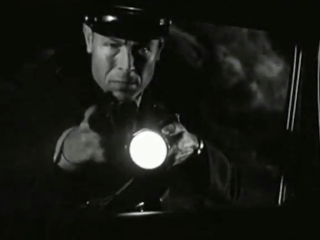
Peter Gunn: Film Noir Comes to TV Big Time
The pilot episode for Peter Gunn opens with a car travelling at nighttime, and the soft thrumming of a base fiddle filling the sound-track, like an ominous pulse.
CUT TO a police car, parked in the foreground, as the passenger car drives past, the place isolated and crowded with stark shadows.
The police peal out, pursue the car and stop it, the music not stopping, but intensifying.
Something terrible is going to happen but we don't know what.
The police appear on either side of the car.
The driver protests about a ticket.
The police draw guns and fire.
SHOCK CUTTING to either cop, guns aimed into the camera.
The flame erupts out of the barrel.
The gunshot is sharp and final.
The second policeman pulls the trigger, the gunshot vying with the music for dramatic effect.
The guns are emptied into every person in the car.
The music is now intense, horns blaring.
And then stopping, as the police car drives slowly away from the murder scene.
Silence.
And then Henry Mancini's Peter Gunn theme erupts, shattering the silence, and one of the great television theme songs of all time is heard for the first time.
.png)
Blake Edwards creates the series, writes and directs this first episode and within ten minutes establishes Peter Gunn's film noir world.
A DOWNSHOT at night, angled down past the neon nightclub sign that runs vertically down the Frame spelling MOTHER's, Gunn's haunt, the streets outside lit by tall lamp-posts, gleaming in the dark puddles. The streets are often wet in Gunn's world.
You seldom see it raining, but the sidewalks glisten with menace.
It's an iconic intro.
Gunn lights a cigarette, his shadow stretches out beyond him.
This is the world of film noir, where chiaroscuro defines and dominates the world.
Shadows sculpt faces of grim regret and solemn determination.
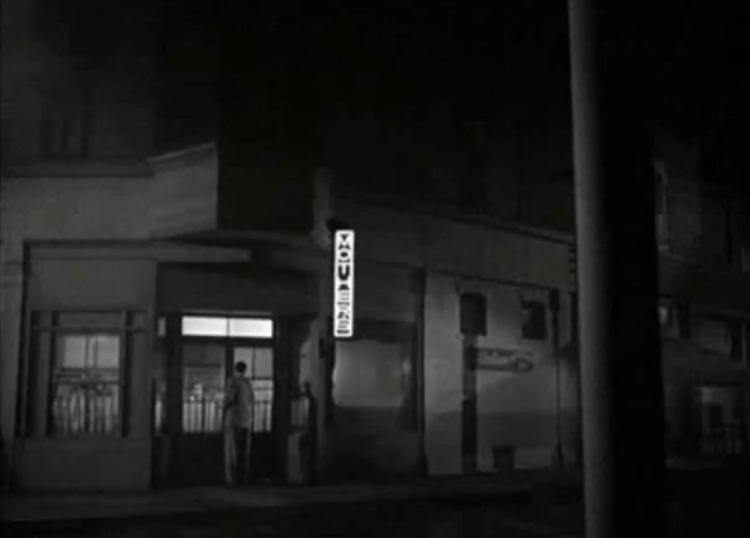
Peter Gunn (Craig Stevens) enters the club, chats with Mother (Hope Emerson), and listens to Lola Albright as Edie sings.
Pete and Edie get together outside when she finishes her torch song, so much smoke filling the air; you're surprised she can breathe, let along sing. We don't actually see the river down below Mothers, where Pete and Edie often stand, and make it clear they are lovers, not just 1950s neutered TV people.
The lights on the river we can't see reflect on their faces as Pete nuzzles Edie's neck, and she talks sultrily about sex in a way seldom seen in 1950s television.

It's all there in the first ten minutes of the first episode of the first season of Blake Edwards's Peter Gunn.
Pete and Edie often kiss and touch and flirt, but it isn't until the last episode of the first season that we ever see the river, when there is a carefully framed Downshot on the two of them and the river below, looking as murky and impenetrable as a city river often is.
Anyone out there know if that one sequence was filmed somewhere else to include the turbulent, muddy currents of water?
If you have any idea, drop a line here, let me know.
For fans of the late 1950s television series, here's the real stuff you want to know about the new DVD set on Peter Gunn:
Timeless video has released the complete Peter Gunn, all three seasons of the series, not split into half seasons, or one season where there's some question if a second season will ever be released.
The prints are UNCUT, and far superior to the two-thirds of the first season that A&E released on DVD years ago. Some of the A&E prints are cut down to 22 or 23 minutes; I haven't run across one episode on this set that isn't complete.
The only thing missing are the bumpers, the title cards with Henry Mancini music, going into the commercial breaks.
But unlike Warner Brothers TV series (Are you listening at Warner Archives? Yes, I know you folks love Nathaniel Dusk, and I'm glad, but the bumpers were a big deal on shows like 77 Sunset Strip and Bourbon Street Beat. When you folks get to releasing these series, include the bumpers. Keep it in mind!), the Gunn bumpers were brief.
I'm no expert on what processes were used to make the Peter Gunn DVDs, but I'll tell you this: these prints are clear; the night-time, noir world is not murky, but sharp with light and dark, on faces, on sidewalks, in early morn deserted amusement parks with Merry-Go-Rounds being used visually for vendettas.
Philip Lathrop's cinematography deserves being preserved. Through-out the entire series, it has a consistency of precision and purpose, on framing and lighting.
There are no distracting "bugs' on these prints.
Timeless has also included a CD of Henry Mancini's music from Peter Gunn! You can't beat that!
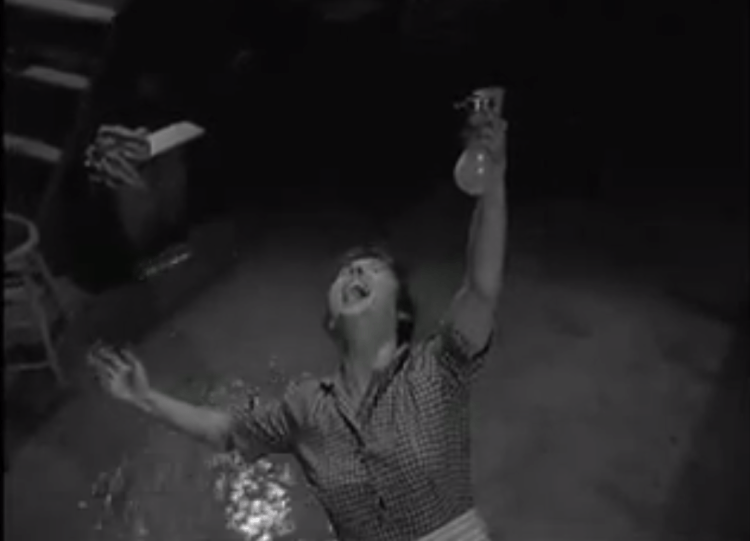
Not only are the prints clear and uncut, but I don't believe I have ever heard this show with such a distinct sound-track.
Henry Mancini's music goes from low thrumming to startling bursts of music, as startling as gunfire. The genuine use of silence and staccato really has impact on this set. It's an unusual aesthetic for television at this time, the sound of televisions being pretty primitive at best in the late '50s.
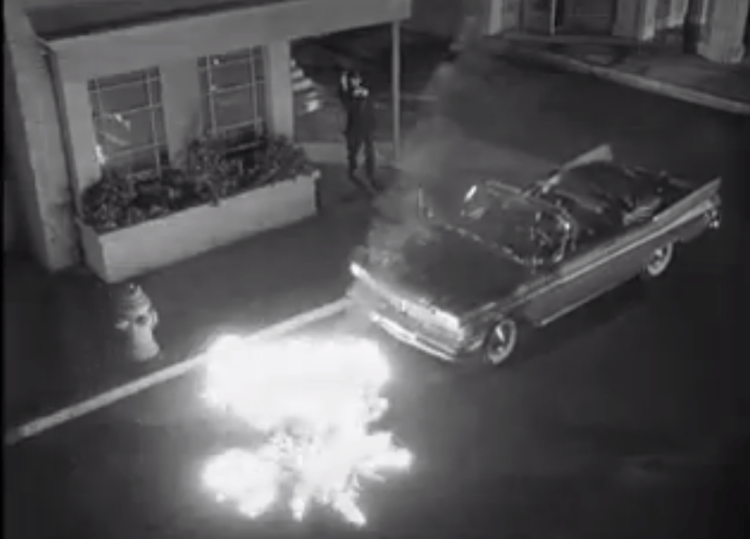
A suggestion to Timeless: Having the individual episode titles appearing on each disc is great, but you should NUMBER the discs. If you don't have some sort of episode guide in front of you, it's hard to know which disc follows which, and you have done a nice job of presenting the episodes in chronological order.

Now, here's what you need to know if you have never heard of Peter Gunn.
This is early television bringing film noir into people's homes on a weekly basis.
Yes, 77 Sunset Strip did episodes that had distinctly true film noir approach in episodes like "Dark Vengeance", but the show was more a West Coast, Hollywood environment that 77 often evoked.
Bourbon Street Beat, starting the same year as Gunn, would also more often than not go for a Noir look, because its locale was New Orleans.
But it is this show that relishes in those wet alleyways and dimly lit rooms, with doomed men and doomed women, struggling to stay alive in a world that is often unpredictably violent. Gunn is the personification of "cool', even when he should know he's going to get gut-punched mean and hard.
This is a world where the streets are perpetually wet, glistening from tall lamp-posts, but where Pete always drives his convertible with the top down, because it looks cool, and despite the atmospheric wetness it never rains.
This show is Blake Edwards coming into his own as creator/director/writer. All of the things that Blake will be fascinated with in his films are evident in Peter Gunn, as early as through-out the first year, even the Pink Panther movies: One only has to see Gunn travelling around in his Plymouth Fury convertible with a seal sitting beside him, or an elaborate mansion crowd breaking into manic chaos to see glimpses of this sense of humor.
Mothers is the perfect place for Edwards; there's a part of the sophisticate and part of the seedier undercurrents there, mingling together, with Gunn as the referee.

Gunn's informants are often the people with the most personality, and the ones that Blake resonates with along with Pete, Edie and Mother. Whether it's Billy Barty's 3-foot, 9-inch high pool hustler, or Cyril Devanti as the Owl, the con who loves to study the galaxy, or the idiosyncratic voice coach who gives elocution lessons to his parrot, these are characters Blake clearly loves. Billy as Babby even gets his own theme song from Henry Mancini.
It's the cool and the people living alternative life-styles that influence so much of Blake's work.
He can't get a transvestite openly into the TV series — he has to wait until the later film version to do that — but he's flirting around the edges of unconventional lives just as Pete and Edie do on their waterfront rendezvous.
One of the distinctive touches that Edwards decided was on Edie's character.
Normally, private eyes (in books and in movies) are loners. This allows the detectives to hook up with whoever the next available woman is in the next story.
But Gunn clearly loves Edie, and it's hard not to like her. Sometimes you can see the writers struggling to find ways to include her into the story, so that she can do more than sing. But the sequences between Lola Albright and Craig Stevens are often fun, and they have enough chemistry together that who would know Lola was actually getting ready to marry the guy who played the piano in her band, in real life.
Here's the part I find personally unrealistic about Peter Gunn.
Time after time, Edie is all over him, and makes it very clear that she wants to go home with him and have sex. And Pete disentangles himself from her arms, walks out into the wet darkness to get the shit beat out of him. If it were me, the case and everything else could wait; I'd rather feel the warmth of a woman than get beaten down onto the wet cement.
But maybe that's just me.
I suppose there was probably a scheduling problem when Blake made the film version,Gunn, he had Laura Devon play Edie, because Lola Albright wasn't available. It was a casting change that had Peter Gunn fans at the time less than thrilled; Laura Devon wasn't well served, and a homicidal transvestite truly can't make up for the loss of Lola Albright.
But when a casting change had to be made on Mother, because Hope Emerson became ill, Minerva Urecal is done up so that you scarcely realize Hope isn't running the joint anymore. Hope had been nominated for an Emmy playing the tough owner of the club. Watching her, I thought how difficult it must have been for her to be recognized, on the one hand enjoying the fact that her work had been recognized, but on the other, having to leave the role that had given her the showcase.
Herschel Bernardi fills out the main cast as Gunn's police friend, Lieutenant Jacobi. Bernardi would also be nominated for an Emmy for the series. Rather than the private eye and hard-boiled cop verbally sparring and at each other's throats, Blake has the two of them as friends, and Jacoby might give Pete a little bit of a hard time, but in the end always comes across giving him the information he needs.
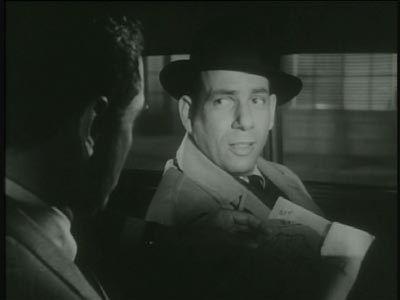
Toward the end of the first season, Jacoby is absent, and in a few episodes there is a black police Sergeant who fills in the role. In some of the last episodes, Jacoby is confined to a hospital bed, with a broken leg.
I suspect that Herschell Bernardi had hurt himself in real life, and this was a way to keep him in the show. There normally isn't a lot of continuity in the series. Anybody out there have any background on this? I'd like to know.
The second season episode "The Comic" is one of the few that appear over-exposed on the set. It's a showcase, really, for stand-up comic Shelley Berman, written and directed by Blake, and is really a three-act play. Berman has a complex role to play, and acquits himself nicely. The end stand-up routine culminating in the climax of the show is truly unusual. The television suits must have been wondering what the hell was going on here!
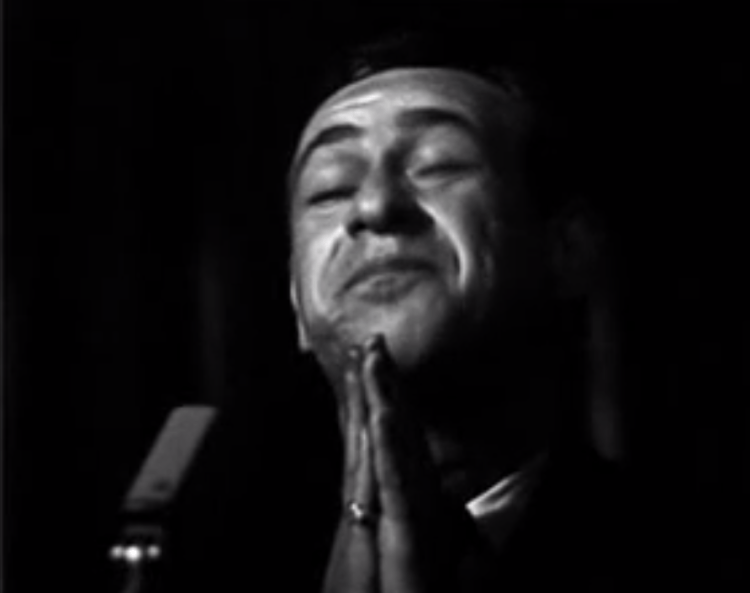
The show'
;s violence really hits because of its use of sound with visuals, not with blood. In fact, there's little or no blood in Peter Gunn, which does not diminish some of those visual, musical openings ending in terrible deaths.
Oh, and by the way, I suspect that no TV show done today will show in detail how to electrocute someone in pretty specific terms as in "Death House Testament", or the husband preparing to kill his wife in "Love Me to Death".
Other directors than Blake Edwards were Boris Sagal (who also worked on Harry Julian Fink's T.H.E. Cat, with Robert Loggia), Jack Arnold (who directed Julie Adams swimming above the Creature From The Black Lagoon, and also The Incredible Shrinking Man,adapted from Richard Matheson's novel) and Robert Altman.
Timeless: A complete set of T.H.E. Cat would be icing on the cake. Love to see it happen.
This Peter Gunn set is one of the real surprises on DVD releases this year. If you've never heard of the show, and you like black-and-white private eye shows, Gunn is the epitome of that genre, along with 77 Sunset Strip.
So, get out your shoulder holster, stalk onto the rain-slickened streets and Edie will be waiting to make you scrambled eggs in the morning, if you don't get shot first.
You probably can't find the set at your local Best Buy, so go bitch at them for it, but you definitely can find the set on Amazon or Deep Discount.com, or at Timeless Home Video's site.
Note that the pictures included with this column are not from the Timeless DVDs of Gunn. We promise they look much better!
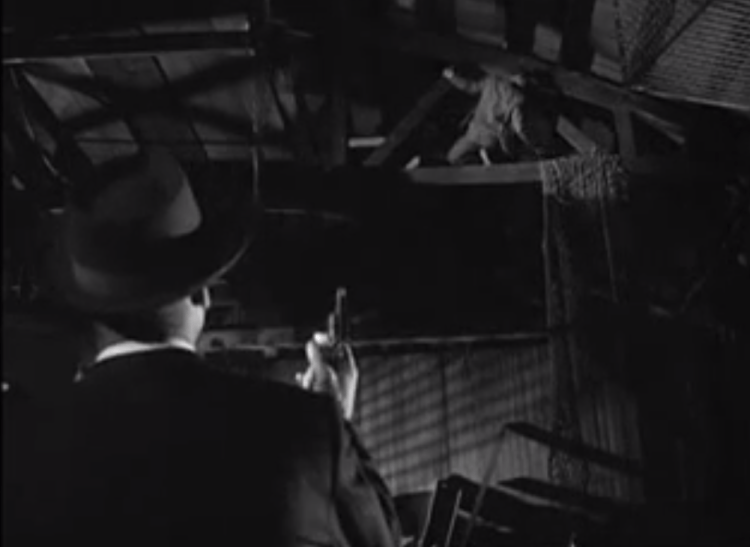





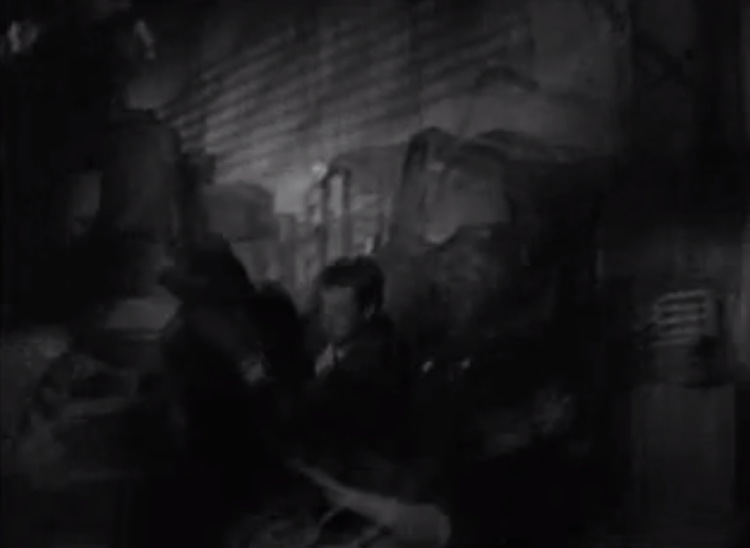
 The Official Website of Don McGregor
The Official Website of Don McGregor